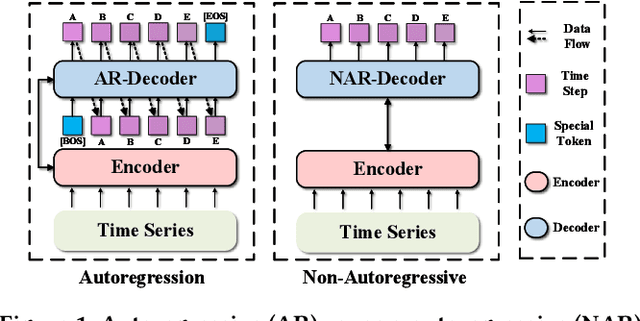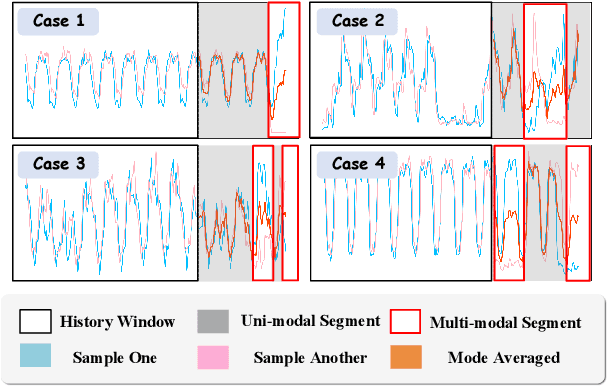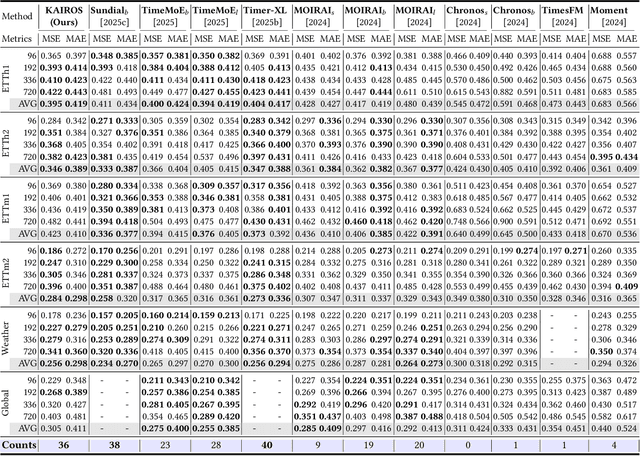Lei Wang
Shenzhen Institute of Advanced Technology, Chinese Academy of Sciences
A Support-Set Algorithm for Optimization Problems with Nonnegative and Orthogonal Constraints
Nov 05, 2025Abstract:In this paper, we investigate optimization problems with nonnegative and orthogonal constraints, where any feasible matrix of size $n \times p$ exhibits a sparsity pattern such that each row accommodates at most one nonzero entry. Our analysis demonstrates that, by fixing the support set, the global solution of the minimization subproblem for the proximal linearization of the objective function can be computed in closed form with at most $n$ nonzero entries. Exploiting this structural property offers a powerful avenue for dramatically enhancing computational efficiency. Guided by this insight, we propose a support-set algorithm preserving strictly the feasibility of iterates. A central ingredient is a strategically devised update scheme for support sets that adjusts the placement of nonzero entries. We establish the global convergence of the support-set algorithm to a first-order stationary point, and show that its iteration complexity required to reach an $\epsilon$-approximate first-order stationary point is $O (\epsilon^{-2})$. Numerical results are strongly in favor of our algorithm in real-world applications, including nonnegative PCA, clustering, and community detection.
Inverse Knowledge Search over Verifiable Reasoning: Synthesizing a Scientific Encyclopedia from a Long Chains-of-Thought Knowledge Base
Oct 30, 2025Abstract:Most scientific materials compress reasoning, presenting conclusions while omitting the derivational chains that justify them. This compression hinders verification by lacking explicit, step-wise justifications and inhibits cross-domain links by collapsing the very pathways that establish the logical and causal connections between concepts. We introduce a scalable framework that decompresses scientific reasoning, constructing a verifiable Long Chain-of-Thought (LCoT) knowledge base and projecting it into an emergent encyclopedia, SciencePedia. Our pipeline operationalizes an endpoint-driven, reductionist strategy: a Socratic agent, guided by a curriculum of around 200 courses, generates approximately 3 million first-principles questions. To ensure high fidelity, multiple independent solver models generate LCoTs, which are then rigorously filtered by prompt sanitization and cross-model answer consensus, retaining only those with verifiable endpoints. This verified corpus powers the Brainstorm Search Engine, which performs inverse knowledge search -- retrieving diverse, first-principles derivations that culminate in a target concept. This engine, in turn, feeds the Plato synthesizer, which narrates these verified chains into coherent articles. The initial SciencePedia comprises approximately 200,000 fine-grained entries spanning mathematics, physics, chemistry, biology, engineering, and computation. In evaluations across six disciplines, Plato-synthesized articles (conditioned on retrieved LCoTs) exhibit substantially higher knowledge-point density and significantly lower factual error rates than an equally-prompted baseline without retrieval (as judged by an external LLM). Built on this verifiable LCoT knowledge base, this reasoning-centric approach enables trustworthy, cross-domain scientific synthesis at scale and establishes the foundation for an ever-expanding encyclopedia.
A Review of Longitudinal Radiology Report Generation: Dataset Composition, Methods, and Performance Evaluation
Oct 14, 2025Abstract:Chest Xray imaging is a widely used diagnostic tool in modern medicine, and its high utilization creates substantial workloads for radiologists. To alleviate this burden, vision language models are increasingly applied to automate Chest Xray radiology report generation (CXRRRG), aiming for clinically accurate descriptions while reducing manual effort. Conventional approaches, however, typically rely on single images, failing to capture the longitudinal context necessary for producing clinically faithful comparison statements. Recently, growing attention has been directed toward incorporating longitudinal data into CXR RRG, enabling models to leverage historical studies in ways that mirror radiologists diagnostic workflows. Nevertheless, existing surveys primarily address single image CXRRRG and offer limited guidance for longitudinal settings, leaving researchers without a systematic framework for model design. To address this gap, this survey provides the first comprehensive review of longitudinal radiology report generation (LRRG). Specifically, we examine dataset construction strategies, report generation architectures alongside longitudinally tailored designs, and evaluation protocols encompassing both longitudinal specific measures and widely used benchmarks. We further summarize LRRG methods performance, alongside analyses of different ablation studies, which collectively highlight the critical role of longitudinal information and architectural design choices in improving model performance. Finally, we summarize five major limitations of current research and outline promising directions for future development, aiming to lay a foundation for advancing this emerging field.
KAIROS: Unified Training for Universal Non-Autoregressive Time Series Forecasting
Oct 02, 2025



Abstract:In the World Wide Web, reliable time series forecasts provide the forward-looking signals that drive resource planning, cache placement, and anomaly response, enabling platforms to operate efficiently as user behavior and content distributions evolve. Compared with other domains, time series forecasting for Web applications requires much faster responsiveness to support real-time decision making. We present KAIROS, a non-autoregressive time series forecasting framework that directly models segment-level multi-peak distributions. Unlike autoregressive approaches, KAIROS avoids error accumulation and achieves just-in-time inference, while improving over existing non-autoregressive models that collapse to over-smoothed predictions. Trained on the large-scale corpus, KAIROS demonstrates strong zero-shot generalization on six widely used benchmarks, delivering forecasting performance comparable to state-of-the-art foundation models with similar scale, at a fraction of their inference cost. Beyond empirical results, KAIROS highlights the importance of non-autoregressive design as a scalable paradigm for foundation models in time series.
Adaptive LoRA Experts Allocation and Selection for Federated Fine-Tuning
Sep 18, 2025Abstract:Large Language Models (LLMs) have demonstrated impressive capabilities across various tasks, but fine-tuning them for domain-specific applications often requires substantial domain-specific data that may be distributed across multiple organizations. Federated Learning (FL) offers a privacy-preserving solution, but faces challenges with computational constraints when applied to LLMs. Low-Rank Adaptation (LoRA) has emerged as a parameter-efficient fine-tuning approach, though a single LoRA module often struggles with heterogeneous data across diverse domains. This paper addresses two critical challenges in federated LoRA fine-tuning: 1. determining the optimal number and allocation of LoRA experts across heterogeneous clients, and 2. enabling clients to selectively utilize these experts based on their specific data characteristics. We propose FedLEASE (Federated adaptive LoRA Expert Allocation and SElection), a novel framework that adaptively clusters clients based on representation similarity to allocate and train domain-specific LoRA experts. It also introduces an adaptive top-$M$ Mixture-of-Experts mechanism that allows each client to select the optimal number of utilized experts. Our extensive experiments on diverse benchmark datasets demonstrate that FedLEASE significantly outperforms existing federated fine-tuning approaches in heterogeneous client settings while maintaining communication efficiency.
Hunyuan3D Studio: End-to-End AI Pipeline for Game-Ready 3D Asset Generation
Sep 16, 2025



Abstract:The creation of high-quality 3D assets, a cornerstone of modern game development, has long been characterized by labor-intensive and specialized workflows. This paper presents Hunyuan3D Studio, an end-to-end AI-powered content creation platform designed to revolutionize the game production pipeline by automating and streamlining the generation of game-ready 3D assets. At its core, Hunyuan3D Studio integrates a suite of advanced neural modules (such as Part-level 3D Generation, Polygon Generation, Semantic UV, etc.) into a cohesive and user-friendly system. This unified framework allows for the rapid transformation of a single concept image or textual description into a fully-realized, production-quality 3D model complete with optimized geometry and high-fidelity PBR textures. We demonstrate that assets generated by Hunyuan3D Studio are not only visually compelling but also adhere to the stringent technical requirements of contemporary game engines, significantly reducing iteration time and lowering the barrier to entry for 3D content creation. By providing a seamless bridge from creative intent to technical asset, Hunyuan3D Studio represents a significant leap forward for AI-assisted workflows in game development and interactive media.
Improving Anomalous Sound Detection with Attribute-aware Representation from Domain-adaptive Pre-training
Sep 16, 2025Abstract:Anomalous Sound Detection (ASD) is often formulated as a machine attribute classification task, a strategy necessitated by the common scenario where only normal data is available for training. However, the exhaustive collection of machine attribute labels is laborious and impractical. To address the challenge of missing attribute labels, this paper proposes an agglomerative hierarchical clustering method for the assignment of pseudo-attribute labels using representations derived from a domain-adaptive pre-trained model, which are expected to capture machine attribute characteristics. We then apply model adaptation to this pre-trained model through supervised fine-tuning for machine attribute classification, resulting in a new state-of-the-art performance. Evaluation on the Detection and Classification of Acoustic Scenes and Events (DCASE) 2025 Challenge dataset demonstrates that our proposed approach yields significant performance gains, ultimately outperforming our previous top-ranking system in the challenge.
Over-the-Air Adversarial Attack Detection: from Datasets to Defenses
Sep 11, 2025



Abstract:Automatic Speaker Verification (ASV) systems can be used for voice-enabled applications for identity verification. However, recent studies have exposed these systems' vulnerabilities to both over-the-line (OTL) and over-the-air (OTA) adversarial attacks. Although various detection methods have been proposed to counter these threats, they have not been thoroughly tested due to the lack of a comprehensive data set. To address this gap, we developed the AdvSV 2.0 dataset, which contains 628k samples with a total duration of 800 hours. This dataset incorporates classical adversarial attack algorithms, ASV systems, and encompasses both OTL and OTA scenarios. Furthermore, we introduce a novel adversarial attack method based on a Neural Replay Simulator (NRS), which enhances the potency of adversarial OTA attacks, thereby presenting a greater threat to ASV systems. To defend against these attacks, we propose CODA-OCC, a contrastive learning approach within the one-class classification framework. Experimental results show that CODA-OCC achieves an EER of 11.2% and an AUC of 0.95 on the AdvSV 2.0 dataset, outperforming several state-of-the-art detection methods.
Video Understanding by Design: How Datasets Shape Architectures and Insights
Sep 11, 2025Abstract:Video understanding has advanced rapidly, fueled by increasingly complex datasets and powerful architectures. Yet existing surveys largely classify models by task or family, overlooking the structural pressures through which datasets guide architectural evolution. This survey is the first to adopt a dataset-driven perspective, showing how motion complexity, temporal span, hierarchical composition, and multimodal richness impose inductive biases that models should encode. We reinterpret milestones, from two-stream and 3D CNNs to sequential, transformer, and multimodal foundation models, as concrete responses to these dataset-driven pressures. Building on this synthesis, we offer practical guidance for aligning model design with dataset invariances while balancing scalability and task demands. By unifying datasets, inductive biases, and architectures into a coherent framework, this survey provides both a comprehensive retrospective and a prescriptive roadmap for advancing general-purpose video understanding.
Quantum-Enhanced Multi-Task Learning with Learnable Weighting for Pharmacokinetic and Toxicity Prediction
Sep 04, 2025Abstract:Prediction for ADMET (Absorption, Distribution, Metabolism, Excretion, and Toxicity) plays a crucial role in drug discovery and development, accelerating the screening and optimization of new drugs. Existing methods primarily rely on single-task learning (STL), which often fails to fully exploit the complementarities between tasks. Besides, it requires more computational resources while training and inference of each task independently. To address these issues, we propose a new unified Quantum-enhanced and task-Weighted Multi-Task Learning (QW-MTL) framework, specifically designed for ADMET classification tasks. Built upon the Chemprop-RDKit backbone, QW-MTL adopts quantum chemical descriptors to enrich molecular representations with additional information about the electronic structure and interactions. Meanwhile, it introduces a novel exponential task weighting scheme that combines dataset-scale priors with learnable parameters to achieve dynamic loss balancing across tasks. To the best of our knowledge, this is the first work to systematically conduct joint multi-task training across all 13 Therapeutics Data Commons (TDC) classification benchmarks, using leaderboard-style data splits to ensure a standardized and realistic evaluation setting. Extensive experimental results show that QW-MTL significantly outperforms single-task baselines on 12 out of 13 tasks, achieving high predictive performance with minimal model complexity and fast inference, demonstrating the effectiveness and efficiency of multi-task molecular learning enhanced by quantum-informed features and adaptive task weighting.
 Add to Chrome
Add to Chrome Add to Firefox
Add to Firefox Add to Edge
Add to Edge